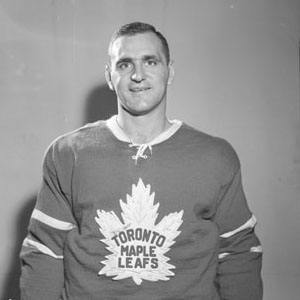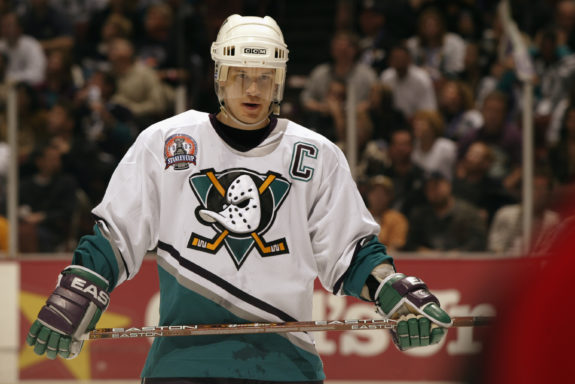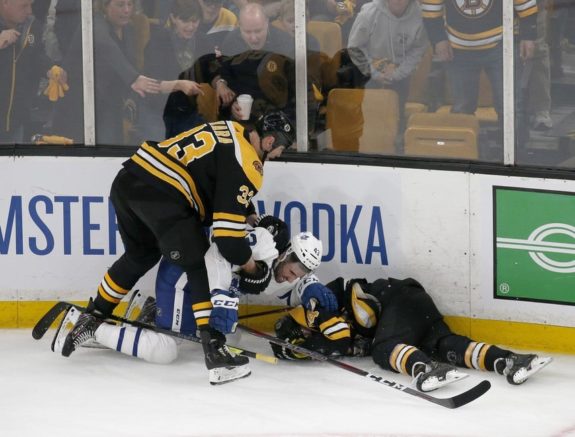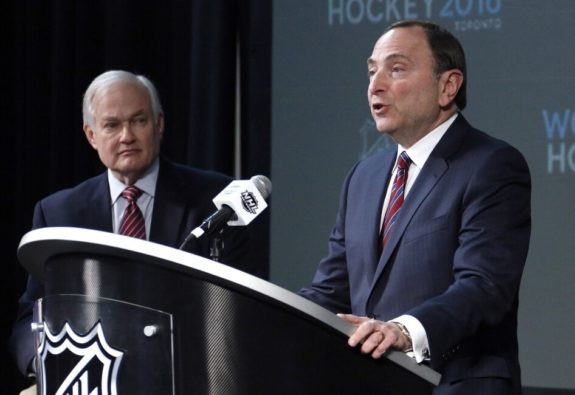Every season after the Stanley Cup Playoffs, NHL teams reveal all of the injuries their players were playing through in order to win the holy grail of hockey. Players have broken bones, torn ligaments, concussions, you name it, and chances are there is someone playing through it in the playoffs.
These aren’t the types of injuries that will just fix themselves either. They require surgeries and physiotherapy. When players push through the injury with some needles and tape, they risk not healing properly and needing additional medical attention. They may become more injury-prone as well. These are potential life-long, life-altering consequences.
When injuries are drawn out and made worse on NHL players bodies, they end up with a heightened risk of addiction and mental health issues. They put the sport above themselves. Some fans applaud this, the teams even proactively help players do it by providing short term fixes, and the media even seems to love it.
The NHL and every other professional sports league are in the business of entertainment. When players injure themselves and push through in a very visible way, they aren’t just hurting their own future, they are hurting the future of all of kids who watch through the season and consider pushing through injury as the norm. This, in turn, hurts the game of hockey.
It’s time for it to stop. A team’s push to the Stanley Cup should test a team’s depth chart, not the personal pain tolerance of each player.
Notable NHL Players Playing Through Injury
NHLers playing through injury is nothing new. It’s become a “tradition” in the game that goes back as far as the NHL itself.

Back in 1964, Toronto Maple Leafs’ Bobby Baun blocked a shot from Gordie Howe in Game 6 that hit his ankle. He left the game for a short time before returning, scoring a goal in overtime and forcing a Game 7. The Leafs won the Cup with Baun’s ankle taped up and on heavy pain killers. It turns out he was playing on a broken ankle.
Even further back, in 1934, Chicago Blackhawks goaltender Charlie Gardiner played through a chronic tonsil infection. His team won the Cup that year and he could barely stand let alone lift the trophy. That offseason, he suffered complications including a brain hemorrhage and passed away.
Through the years, this has become a narrative every season. Players push through terrible injuries for the sake of the team. In 2010, Philadelphia Flyers winger Ian Laperriere took a puck to the face during the first round, suffering a concussion, an orbital bone injury and requiring around 100 stitches. He returned later in the playoffs in the Conference Final and played through the Stanley Cup Final. Post-concussion symptoms ended his career and stayed with him for years.
One of the most known playoff injuries was to Anaheim Ducks’ star Paul Kariya. Facing the New Jersey Devils in the 2003 Stanley Cup Final, Devils captain Scott Stevens laid a massive hit on Kariya, resulting in the forward laying on the ice, unable to get up for several minutes. Only minutes later the Ducks player returned and scored a goal to help the team force a Game 7. Kariya obviously sustained a concussion, and his career would be cut short due to his head trauma.

One of the greatest players to ever play the game, Mario Lemieux, had such bad back pain in the 1993 Playoffs that he had to have someone tie his skates. Numerous players, including some of the best to ever play the game, had to end their career early because of injuries. Kariya, Lemieux, Eric Lindros (concussions), Bobby Orr (knee), Pavel Bure (knee), and Cam Neely (knee and hip) are just a few stars that saw their careers cut short.
But even so, players continue to push through. Through the years, we’ve seen terrible injuries hidden to other teams and the public. In the 2013 playoffs, Boston Bruins’ Patrice Bergeron played with broken ribs, torn cartilage, a separated shoulder, and a slowly collapsing lung. Teammate Gregory Campbell broke his leg, yet finished his shift.
In 2017 alone, Pittsburgh Penguins’ Ian Cole played through a broken hand and broken ribs, San Jose Sharks’ Joe Thornton played on a torn ACL and MCL, St. Louis Blues’ Alex Steen had a broken foot and Ottawa Senators’ Erik Karlsson had major muscle damage to his ankle and a fracture in his heel.
One of the most recent accounts where a player pushed through, extremely visibly, came in the 2019 NHL Playoffs. After getting hit in the face with the puck in Game 4 of the Stanley Cup Final, Bruins captain Zdeno Chara actually broke his jaw in multiple places. He still dressed for the final three games of the playoffs, and it turns out he wasn’t the only Bruin with injuries either.

All of these players pushed through life-altering injuries in order to help their team in the playoffs, some needing to end their career early. But the question is, why do they feel the need to put the team above their own lives?
NHL Player Opinions on Playing Through Injury
Many former NHLers have tried to explain why players feel the need to play through injury.
“I think it’s a pride thing,” said former Dallas Star Bill Guerin, “You want to be out there when all of the chips are on the line.”
Former NHL goalie Eddie Johnston helped the Bruins’ to a Stanley Cup in 1972 with broken fingers in his blocker hand. After his playing career, he discussed this topic.
“You stuck a needle in, you were still sore, but you played. You look forward to the playoffs all year, and you may only get one shot at it, so matter how bad you are hurt you are going to play.”
Former NHL goaltender Eddie Johnston
Mike Murphy, former player and current senior vice president of hockey operations for the NHL, played in the 1970s and ’80s, recalling that it was just a part of the game.
“The doctor said you are going to need surgery on this and I don’t know how you are going to play. But we found a way with tape and a brace. Was I 100%? No. But it was better than not playing… I don’t think anyone endures pain more and gets through the game when they are not 100%, better than hockey players.”
Former NHL defender Sami Salo once played nearly entire season, and the playoffs, on a torn labrum while he was with the Ottawa Senators. When asked for advise to today’s young hockey players, Salo summed up the mentality of the NHL well.
“Do whatever it takes to stay in the lineup.”
Former NHL defenseman, Sami Salo
One more quote, by Blackhawks captain Jonathan Toews in the 2013 Stanley Cup Final, is very interesting and contrasts these other comments.
“I think that always comes down to the player and obviously the doctors and the training staff. At a certain point, if a player can’t play, I think, in this locker room especially, we all trust each other that everyone’s giving it everything they got and if it’s too much, well, we understand that.”

Why can’t this be the case for all injuries? You give it everything you’ve got until you’re hurt. There should be no shame in being self-aware and sitting out. If anything, that’s a strength. These players have dreamed about winning the Stanley Cup, and being able to be strong enough to take yourself out of the game? That’s true strength.
Then again, Toews’ teammate Duncan Keith, who lost seven teeth in the 2010 playoffs and came back later in the game, followed up his captain’s comment with this:
“If you can’t play, you can’t play. If you think you can play through it, you can.”
NHL Culture Has Fed Player Mentality
Based on the quotes above, it’s obvious there’s a common mentality in the NHL: play until you physically can’t. Since playing through injuries dates back to the beginning of the NHL, it has become a part of its culture. The league needs to break it.
This culture has led to players hiding their injuries. With the high awareness around concussions now, there’s no way the NHL would have allowed Bruins’ Jake DeBrusk to continue playing in the 2019 Playoffs if they knew about his concussion that was sustained in the first round. Yet, he played three more rounds.
With the long list of injuries after every season’s end, what about the trainers and team doctors? Do they not see the pain and the symptoms? Pete Demers, a former trainer for the Los Angeles Kings,touched on the process that medical teams go through, and explained everything that impacts the decision to let a player play.

The considerations include: “Is the player better than his healthier replacement? How will playing through the injury affect his recovery and long-term health? Last, there is the political push and pull among the medical staff, players eager to play, coaches desiring a full lineup and a team’s drive to win.”
Demers says, “We always have to avoid compromising medical ethics, It’s not worth it. Players got families, and life goes on, win or lose. It’s not a war — this is a game… All of the sudden, you’ve got four guys in having surgery at the end of the season, and they were playing in the playoffs. That’s kind of a telltale sign.”
It’s a bit of a vague answer. Basically, they do their best to maintain their ethical responsibility, but sometimes coaches give a push, players demand to play, and the question is asked if the injury is really that serious. This is not the appropriate response to player injury.
The media and fans are in on it too. One ESPN article called Chara’s return to the 2019 Stanley Cup Final with a broken jaw, an “amazing comeback.” When he stepped onto the ice the next game, the crowd roared in appreciation. Meanwhile, he had to write down answers for the media scrum before the game because he couldn’t talk.
Even the well-known NHL slogan, “Because it’s the Cup,” has been used to explain why NHL players play through their pain. The league is to blame, too. They are responsible for player safety, they even have a Department of Player Safety (DoPS). Yet, was is safe for Chara to play with a broken jaw? Player safety is more than just suspensions on illegal checks, and the DoPS should be on the lookout for players playing injured and shut it down.
Playing Through Injury Needs to Stop
Let’s go back to Kariya for a minute. The Ducks’ star suffered multiple concussions, highlighted by the undiagnosed one in the 2003 Stanley Cup Final from the Stevens’ hit. Years later, the former star broke a long silence and talked about the injury.
“When you wake up in a hospital bed and you don’t know who you are, where you are, or what got you there, you’re not in a happy spot,” Kariya said ahead of his Hall of Fame induction. “There’s a lot of anger. With time, you learn to have a different perspective on it. When I look back at my career, that’s the last thing I think about.”

He doesn’t remember the hit, leaving the game, coming back to the game, or scoring upon his return. While concussion spotting and reaction has improved since the 2003 playoffs, it’s still a big issue. In the 2019 playoffs, Bruins’ DeBrusk and Matt Grzelcyk both suffered concussions and played through. Have we learned nothing from Kariya?
This is more than just the impact it has on the lives of the players. This is not something where no one is hurt other than the player pushing through pain. The NHL is a league of role models. Kids who are just starting to play hockey watch the game and see players push through these injuries and just like that, they think it’s what you’re supposed to do. That mentality is instilled at a very young age.
But there’s a big difference. NHLers have some of the best medical help in the world, and they usually have people helping them manage the pain and long-term effects when possible. But for young players, if they don’t open up about their injuries, there’s no one to them through it. This leads to life-long medical issues and mental health issues.
The NHL has an image of being the “toughest players.” What would be even stronger, would be for a player to be open and make a statement. Injuries happen, that’s unavoidable in the game of hockey. But the league needs to act as a role model here, and stop players playing through their pain.